
In spite of the time restriction, each comment expressed the dominant position of the ME/CFS community - patients and specialists alike - which is that the IOM is not qualified to make a new case definition. Several patients asked the IOM to cease the review process immediately.
As expected, these comments met with silence.
Though appeals to good medical practice, to science, and to conscience are needed, they will not affect this committee. Regardless of their task description, most of the people on the IOM committee are not motivated by a desire to devise an accurate case definition that will help further research and aid diagnosis.
The purpose of the IOM review, as well as the P2P review, is to settle the "CFS Question" once and for all. Is this a mental illness, treatable with CBT, exercise and antidepressants, or is it a complex organic disease, requiring expensive immune modulators?
The drive to define this disease, at least in part, as a mental illness, is so strong that even well-known specialists are beginning to embrace exercise and talking therapy as part of their protocols. In a recent presentation to the Mass CFIDS Association, Dr. Anthony Komaroff listed CBT and GET as successful treatments. Nancy Klimas says that if patients don't exercise, in some form, they will only get worse.
There is no evidence - clinical or scientific - to support these claims. There is only political and economic pressure.
On January 27, these brave patients stood up to HHS and spoke the truth. We must follow their lead, for to stop speaking the truth is to allow a lie.
__________________________
Please note: Public comments by Mindy Kitei, Jeannette Burmeister, Charlotte von Salis and Maryann Spurgin are HERE.
You can read summaries of the first hour, including Dr. Rick Erdtmann, Director of the Board on the Health of Select Populations, Dr. Ellen Wright Clayton, IOM Committee Chair, and Dr. Nancy Lee, Designated Federal Officer to CFSAC, study sponsor [HHS] representative HERE.
You can read a summary of the second part of the meeting, including presentations by Elizabeth Unger on the CDC multi-site study, and Susan Maier, on the P2P panel HERE.
You can read a summary of the third part of the meeting, including presentations by ME/CFS organizations and the FDA Voice of the Patient Report HERE.
Originally published on ProHealth.
By Erica Verrillo
You can read the meeting agenda HERE.
You can watch the presentations HERE.
You can read information about the committee members HERE.
It is not too late to submit comments to the IOM Committee. Send your comments to: [email protected]
___________________________
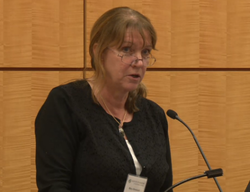
I was going to give prepared remarks, but so many people have spoken today that I am going to fill in some potential areas that can be further addressed.
You heard a compelling story of what this disease is like for patients. I especially want to focus on post-exertional malaise and cognitive dysfunction, because those are profound symptoms for patients, and it doesn’t take long to know which patients have ME because of those symptoms. Chris Snell has said that with using cardio-pulmonary testing you can actually distinguish between patients with ME and patients with depression, deconditioning and a number of other chronic illnesses. And yet, there is a lot of confusion in the medical community – why is that? The reason is because for 30 years we have used definitions that fail to require these hallmark symptoms – and we are still using these definitions.
We allow patients to have any combination of four out of the eight symptoms of Fukuda. Lenny Jason has shown how we end up with depression, deconditioning, and other medically unexplained fatigue conditions mixed in with ME [using the Fukuda definition]. No wonder doctors are confused. Every patient will tell you stories about going to a doctor, and the doctor tells him he needs talk therapy. My son was recommended to get exercise, because of what is on medical education sites. He crashed. When he went back and told the doctor, she said, “I can’t tell you how important it is you continue to exercise.”
He woke up this disease on May 19. If he had been told to look out for post-exertional malaise, based on the symptoms he had, he would not have climbed Mt. Washington, and ended up even sicker than he was.
It’s important to realize that this doesn’t just affect ME patients. 30% of ME patients end up with the diagnosis of chronic fatigue syndrome, before they ever get diagnosed correctly with MS because this is a waste bin diagnosis. If you have fatigue and you go to a doctor, they are going to say you have chronic fatigue syndrome.
The second thing that I want you to keep in mind is exactly what disease you are talking about. Are you studying the ME that every single patient here talked to you about today? Or are you studying the set of all conditions that meet the Fukuda criteria? Remember they are not the same. They are very different.
We heard today about “CFS” being heterogeneous. Of course it’s heterogeneous. If you throw all these conditions together you are going to end up with heterogeneity. But it is man-made heterogeneity. It’s not real. [Applause] ME is heterogeneous, it’s a very complex disease. It depends on how long you’ve had it, what your trigger was, what your sex is, any number of combinations, but that is not the same as the man-made heterogeneity of CFS.
I’d like you to look for where the proof is that all these biologically unrelated illnesses should be considered one clinical entity, or one spectrum of illnesses. There is no scientific proof that validates that. [CFS] is an invalid clinical entity that needs to go away.
As far as the evidence base goes, because of all these definitions for all these years, the evidence base is so polluted with unrelated cohorts that you need a Ouija Board to read it. It is impossible to make sense of it. I’m going to give you one example, there is a Cochrane study that proved that CBT was an appropriate treatment for CFS. It included studies which required fatigue for six months, for three months, for four months – no other criteria. Because of this and other studies we now consider CBT to be appropriate for these patients. It has nothing to do with us.
______________________________
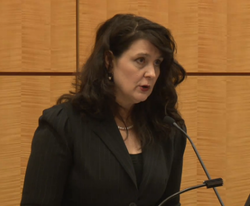
Good afternoon. My name is Eileen Holderman. I’m an advocate. I apologize for not having any formal presentation. I have some notes, so I’m going to “wing it.” But I’ve been living this IOM thing since November 2012 when CFSAC made a recommendation. We’ll get to that in a moment. But I’m here today to state my opposition to the IOM HHS contract, and I’m calling for the cancellation of the contract.
The majority of stakeholders oppose the contract for many reasons, and it’s evidenced by the letter and call campaigns, twitter campaigns, the congressional calls and meetings, the two petitions, the demonstration, the media interviews, legal actions, Freedom of Information Acts, the advocates’ letters signed by 171 advocates, and the ME/CFS expert letter. Fifty ME/CFS experts, researchers and clinicians, got together—they wrote a letter and they sent it and mailed it to Secretary Sebelius , and in that letter they said:
“We, the experts have developed a definition, the Canadian Consensus Criteria, to describe ME/CFS. We’re using it, we’ve been using it, we’re committed to refining it. Now we want the government to use it.”
Simple as that. Why waste a million dollars on a contract, especially when this disease gets only five million, and as Dr. Klimas said eloquently, less than male pattern baldness. And that’s a fact. That money could go toward biomedical research. Why waste 18 months to do a study when we already have a good consensus criteria, and then years more to roll that out and “mis-educate” doctors and healthcare professionals with what may be a worse definition than Fukuda, and a worse name than “Chronic Fatigue Syndrome”? And it’s no reflection of the people on this panel because I do have tremendous respect for all of you as individuals, but when HHS sets up a poor study design, you guys can do only so good as what they dictate. And I know that CDC does this all the time by inviting experts to participate on their website, on the CME courses, but then when they dictate the terms of it and say that you can only teach doctors by using the Fukuda definition, which is 20 years old, outdated, erroneous—doesn’t have the hallmark symptom of PEM—and is used for research only, then you’re really not educating doctors; you’re mis-educating them.
So what is so upsetting to the patient community is that in November 2012, CFSAC—and I’m a member of that committee—we made a recommendation, and I helped craft the language of that recommendation. We wanted to convene a workshop with only ME/CFS experts, meaning researchers, clinicians and patients, to reach a consensus on a research and clinical case definition, starting with the Canadian Consensus Criteria. We basically wanted to just endorse that criteria. And what happened after that was outrageous because in our subcommittees, there was contention at the highest level.
I chair one of the subcommittees, and I don’t want to get into the ugly realities of what was going on behind the scenes; but it was so ugly that anyone who spoke out, and I was one of them, got calls from the government. We were intimidated, and we were threatened with eviction from the committee, and there is an ongoing investigation about it. It directly relates to the case definition recommendation we made. We are the experts making the recommendation, and the government is not taking our recommendation. They’re hijacking it, making it their own, and not using all experts like we asked, drawing it out. They’re going to do the same thing that VA-IOM did to Gulf War veterans by redefining—by giving them a new name, “Chronic Multisymptom Illness,” by saying the best clinical practices for that disease are CBT, GET and antidepressants. The [IOM] study that came out in January was very alarming because it had a section on ME/CFS, and in that section it said the same clinical practices, GET, CBT and antidepressants, would be used for ME/CFS. So we don’t know how this new panel could possibly contradict the earlier findings of the IOM study. I simply don’t know how that would work.
It also troubles me that CDC and NIH will be participating in this, and there is a contradiction because on one hand, IOM says once the sponsor finishes, they’ll have no contact. On the other hand, HHS says there will be continual meetings with NIH and CDC to give them information. I’ve been very vocal about the flaws in both of those studies. I’m not going to get into them today, other than to say that for 30 years we waited for biomedical research for this brutal neuroimmune disease with an infectious component; and instead, we are getting now three initiatives at the same time - talk about redundant and waste of money - to come up with case definitions. We’ve already got one. It’s the Canadian Consensus Criteria. Our 50 ME/CFS experts have said “We’ve got it. Let’s use it." Let’s use the money instead for biomedical research, education and treatment for the over one million Americans and 17 million worldwide suffering from this serious neuroimmune disease, Myalgic Encephalomyelitis.
So, I’m part of the patient advocacy movement that is going to continue to push the envelope and ask for the cancellation of the contract, and let’s get on with the serious business of studying and treating this disease. Thanks.
Ellen Wright Clayton: I do want to clarify one point: there will be no contact between the committee members and HHS at any point from now on until the end of the study. The contact between the staff is only to show that they’re doing work so that is…um…you know…just to give progress reports, but it will in no way go to the substance of what the committee is talking about. There will be no contact between the committee and HHS till the end of the study. I just want to be very, very clear about that.
___________________
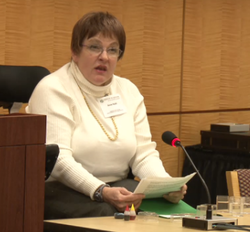
[Anne placed four containers of water, a fifth empty container, and three different food coloring dyes on table. A small vase with flowers was left in the back of the room since she couldn’t carry it all up front.]
I’m an ex-school teacher so I brought some visual aids.
The basis of medicine is “primum non nocere”: “First, do no harm.” It is the underlying principle of all medicine. It is drilled into medical students for a very good reason. Medicine, beyond any other field, has the greatest potential to do good and harm.
Harm is not necessarily determined by intent, effort, or education. “Primum non nocere” is a reminder that it is important to evaluate and mitigate both potential obvious and hidden harms. It takes insight and courage to speak up and say that something is should be done differently or not done at all.
This simple demonstration will show you why HHS’s request to consider using multiple definitions to come up with a new definition puts you in the position of needing to have that insight and courage.
A perfect definition is like water. It’s clear and it’s unadulterated by anything. [Anne held up a container of pure water.]
No definition of ME, CFS, or ME/CFS is perfect but there is a distinct progression of clarity.
CFSAC requested the refined definition be based on CCC for a very good reason. You have been asked, in your statement of work, to “consider the various existing definitions,” which is to say to combine these definitions, and the results of research based on them, to create a superior definition.
While that sounds laudable and even-handed, it is actually a political answer to a scientific question. No matter how great your skill and motivation is, it is simply impossible to merge divergent definitions, each with their own issues, into one superior one.
A definition may be clouded by many things. It is difficult to describe a disease that as complex as ME/CFS and so even the CCC has its faults. [Anne added a drop of dye to a second container of water.]
Fukuda has the same faults and so does Oxford or other definitions you use. [Anne added dye to third and fourth containers.]
Fukuda (I just looked at the main definitions) is general in its description of the symptoms. They are vague. It describes PEM but it does not make it a mandatory item. [Anne added a few drops of a different dye to container 3.]
Oxford really describes a depressive situation, as much as anything. Yes, it applies to CFS but it is also describing depression. It does not describe the distinct patterns that are often found by our researchers in this disease and it does not even mention PEM. [Anne added a lot of the second dye to container 4.]
It is the definition that might as well just have everything in it. [Anne added a lot of third dye to container 4.]
What HHS has asked you to do is to combine these definitions to come up with a different one. There’s no way that you can take this definition [Anne poured some of the now dark water of the “Fukuda” container into empty container] and this definition [Anne poured some of the now black water of the “Oxford” container to same new container] and come up with pure water [Anne held container of original container of clear water next to “mixed” container].
You can’t do it. You need to look at what is the actual disease.
Our various experts do know this and we are ignoring them. That was what the CCC was. That is why our experts signed that letter suggesting that that was appropriate.
The imperfections in these definitions cloud all the research that comes out of it. This morning I put some daisies into this dye [Anne indicated “Fukuda” and “Oxford” containers] and you can see that my white daisies [Anne pointed to the flowers] have turned green and orange in a matter of an hour or two.
It is the same way with research. These imperfections absolutely permeate the research that their based on.
So if you have research based on the Oxford definition, it is going to have those flaws inherent in it. They may be corrected for but you need, as a committee, to recognize that what you are reading, though it may sound reasonable, has flaws that you need to understand.
Combining these will not get a better definition, it will not clarify research. Research will only improve by starting with the best definition, using just the best research, and filtering the problems out. It is clear that the CCC is superior to other definitions and that it should be the basis of further refinement.
By serving on this committee, you have tacitly agreed to live by “do no harm.” A muddled definition will harm millions of patients for decades.
I ask you to choose to “do no harm” by refusing HHS’s long-standing patter of imprecise definitions. I ask you to report back to the HHS that they should immediately adopt CCC until such time as an expert-only committee can properly update it.
_____________________________
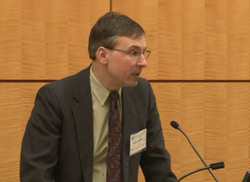
I’ve had ME/CFS for nine years. I believe the most important issue for the committee to consider is the unintended consequence of diagnostic criteria based on symptoms alone. To that point I would like to recommend a book. It’s called Brain on Fire by Suzannah Cahalan. (I don’t receive any profits from the sale of the book.) Miss Cahalan did not write about ME/CFS. She has nothing to do with our illness, at least not directly. Rather, she describes in the book how she went completely insane, and then completely recovered.
She recovered because she had a treatable autoimmune disease that looked exactly like mental illness. Most of her doctors concluded that she was just plain crazy. Only one doctor believed that Suzannah’s normal personality was still inside her twitching, emaciated body. But all the doctors were right. All of them were right, because if she hadn’t been diagnosed, and treated for her autoimmune disease, her insanity would likely have become permanent. There is a narrow treatment window, a point of no return.
She would have spent the rest of her existence drooling in a locked psych ward, or possibly have died. In other words, the doctors’ objective, symptoms-based diagnosis, would have become, instead, a self-fulfilling prophecy.
It’s not like her medical team didn’t try to find a reason for her sudden onset paranoia, violence, delusions, and seizures. Dozens of laboratory tests showed absolutely nothing. A spinal tap showed that her white blood cell count was elevated, so the doctors looked for an infection but they couldn’t find one.
They looked for some external stressor that had driven her insane, but they couldn’t find one. Instead, her immune system was inflaming receptors in her brain in a manner so subtle that it took a brain biopsy to change her doctors’ minds.
If you’ve read or listened to this carefully then you know why I am telling this story at a conference about ME/CFS. However, I’ll spell it out anyway.
For decades, we too have had symptoms that seem psychiatric. For decades we too have taken tests that showed nothing. For decades researchers pursued psychogenic models of our disease, but failed to explain its precipitance, severity or persistence. Also for decades, researcher pursued dozens of infectious agents, or other external insults. All they found were immune disruptions that don’t seem to correlate to anything.
I believe they do correlate to something; we need only to find what it is.
I wish the committee best of luck in its work. I know you will be objective and fair. But then, so were Suzannah’s doctors. Please take care what you prophesy.
Thank you for your kind attention.
_____________________________
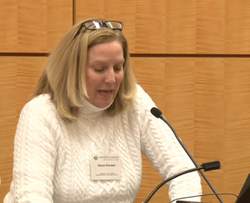
I felt an obligation to speak on behalf of Anne LeConti, because she wanted to have a voice here today.
MECFSForums is an internet forum for people who suffer with Myalgic Encephalomyeitis (M.E.), which is also sometimes called as you know “Chronic Fatigue Syndrome” or “CFS” and friends of ME sufferers. This forum began in June 2010 and now has over 6850 members. MECFSForums was not invited to present information to the IOM at this meeting.
Perhaps MECFSForums was not invited to present because a forum administrator, Patricia Carter, created a Petition to Stop the HHS-IOM contract and accept the [CCC] definition of ME on October 7, 2013. This petition now has more than 5000 signatures. [Applause]
The Petition to Stop the HHS-IOM Contract and Accept the CCC Definition of ME is solid evidence of the position of thousands of ME/CFS stakeholders on the contract HHS has made with the Institute of Medicine has entered into to define ME/CFS--and there are thousands of patients and friends oppose this contract.
A poll of the forum membership was taken asking forum members’ positions as to the IOM contract. The result was that 100% of members who voted agree with this statement: “I oppose the contract and I support the experts’ letter urging HHS to adopt the CCC now."
This Statement from MECFSForums represents the views of thousands of M.E. patients, families, caregivers and friends in opposition to this IOM contract. Millions of people worldwide suffer from Myalgic Encephalomyelitis (ME).
For decades, sufferers have been left with no real biomedical research and no effective treatments. Now the HHS is attempting to prolong this by contracting with the Institute of Medicine (IOM) to redefine the illness. This is unnecessary because experts in the illness, researchers and clinicians alike, have reached a consensus that the Canadian Consensus Criteria (CCC) we believe that should be used for both research and clinical purposes. They have sent an Open Letter to Secretary Sebelius expressing their support for the CCC.
We believe the HHS contract with IOM is simply a waste of precious resources.
This is the text of the petition which now bears more than 3700 signatures: “We, the undersigned people suffering from Myalgic Encephalomyelitis, along with our families, caregivers and friends hereby ask Secretary Kathleen Sebelius to cancel the contract HHS signed with the Institute of Medicine (IOM) to develop “clinical diagnostic criteria” for ME/CFS. We further urge Secretary Sebelius to respect the consensus reached by a group of experts and adopt the Canadian Consensus Criteria (CCC) as the research and clinical case definition for ME/CFS.”
____________________________
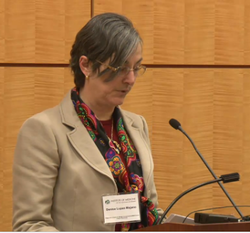
Many thanks to all advocates for their presentations and comments. I especially want to thank Mary Schweitzer and Charmian Proskauer for highlighting concerns about young people.
I want to address two hallmark symptoms of this illness, and then highlight five points about the process you will use.
Number 1: Post-exertional collapse, unfortunately also known as post-exertional malaise. Post-exertional collapse can result from minimal physical or cognitive exertion, is unpredictable and lasts for days or weeks. The pervasiveness of post-exertional collapse often has no correlation with the minimal exertion of the triggering event.
Number 2: Impairment of executive function. Impairment of executive function is evident in areas such as processing speed, reaction time, working memory, and concentration. These impairments have been recorded as a significant concern, both in research and in reports such as FDA’s “The Voice of the Patient.”
As of today, you have just 371 days until your deadline for the clinical and diagnostic criteria for this illness. These are five important things I think you should think about:
One: This illness may require different diagnostic criteria, such as pediatric and adult, depending on the age at presentation.
Two: The definitions used to select patients for studies greatly impacts the study results. Therefore, assessment of literature about this illness must include careful evaluation of the definitions used and the symptoms covered. The clinical and diagnostic criteria that you have agreed to develop will have far-reaching effects on diagnosis, health insurance and treatment, and will likely have very important effects on school accommodations for young people with this illness.
Three: Clinical and diagnostic criteria should include detailed assessment of symptom severity and frequency and should reliably assess post-exertional collapse and cognitive impairment.
Four: The clinical and diagnostic criteria must include clearly defined criteria and appropriate assessment tools. It must be as accurate as possible at this point in time. As you develop the diagnostic criteria, think about how this criteria will best serve patients and practitioners. The outreach strategy you develop to operationalize and disseminate this criteria must provide for widespread information about this illness, so that patients are appropriately diagnosed, including all those who are currently undiagnosed, or misdiagnosed.
Five: This afternoon is very limited time to spend with those who know this illness best. FDA spent months poring over input to develop “The Voice of the Patient.” Your work will be most successful if you enlist experts and patients throughout the process.
Thank you. [Lopez Majano’s comments continue.]
_____________________________
And now, on behalf of my son [Matthew]. For those who don’t know, my two sons are patients. I am the caregiver.
Good afternoon. My life changed dramatically nine years ago when I got sick with this blasted illness. I went from being an active adolescent to being housebound. In one sense, I am one of the “lucky” ones. I was diagnosed within six months of onset. This is not usually the case, as research has shown that all too often patients are undiagnosed or misdiagnosed. That brings me to the question of the most important thing you should consider throughout the course of this study: Criteria you develop must be accurate. You must carefully consider, as separate criteria are needed for onset and different ages. The criteria need to include assessment of frequency and severity of symptoms, assessment of cognitive impairment must also be included, because physical and cognitive exertion can result in post-exertional collapse, it too must be included in the criteria and must be accurately assessed.
Keep in mind that post-exertional collapse with this illness is different than in other illnesses, and our physiological response to exertion is different from that from other people with other illnesses and healthy people.
I said earlier that in a sense, I am one of the “lucky” ones. In another sense I’m not. Despite now being a patient of one of the best specialists, despite doing everything I can to try to get better, I haven’t been able to. No treatment that I have tried has been successful. That there are no successful treatments is likely due to heterogeneity of the patient population as the result of overly broad definitions. Replacing this heterogeneity with accurately diagnosed patients will help us move forward to identify successful treatments.
Accurate clinical diagnostic criteria will benefit me as well as all those who are undiagnosed or misdiagnosed. Precise clinical diagnostic criteria will reduce that heterogeneity and improve the suitability of study cohorts, because those diagnosed with this illness will know if they qualify for research studies. Studies will have more appropriate subjects, and resulting study signals will be clearer, enabling assessment of treatment safety, and efficacy.
Until there are successful treatments, I, like many others, am stuck. I guarantee you we want to be healthy again. I leave you with this quote from Dr. Leonard Jason.
“In order to progress the search for biological markers and effective treatments, essential features of this illness need to be empirically identified to increase the probability that individuals included in samples have the same underlying illness.”
____________________________

I was honored and pleased to have been asked to sign what has become known as the 'Experts' Letter,' where several dozen colleagues have expressed opposition to possibly altering or redefining the criteria of M.E. & C.F.S. by virtue of the pending IOM contract. If it was the case that there was opposition to the existing Canadian Consensus Criteria, then open discussion about these criteria would be more useful than closed door redefinition by a panel where the majority are not known to be familiar with the disease, Myalgic Encephalomyelitis.
At present, the Canadian Consensus Criteria are used by a majority of experts who diagnose and treat this disease; they adhere to the concepts defined by Dr. Melvin Ramsay, who helped pioneer research in this disease, in contemporary clinical settings. Were discussion and debate even necessary, one million dollars could still have been saved – a not insignificant percentage of NIH research funding dollars in this area. Given the paucity of funds allowed for research and study of what we know as Chronic Fatigue Syndrome, it seems, with all due respect, to be a shameful waste of money.
Open discussion on the IOM method of approach has not been made available; we can only hold out hope that the result is closer to one of the more strictly defined criteria. However, given all we have seen recently, marvelously chronicled by several patient-bloggers (notably, Jeannette Burmeister, Jen Spotila, and Erica Verrillo), it seems inevitable that any preference given to the "Evidence Base," may produce a set of loose criteria. In this area, where the 'evidence' has long been grossly distorted, and to date has produced a flawed, inaccurate model of this very serious physical disease, such criteria may well describe other conditions or disease models that are, simply put, not the disease described by Ramsay.
A group of us are forming the "Academy of M.E. & C.F.S. Physicians," composed of experienced clinicians and researchers familiar with the disease, M.E., and related conditions. The Academy will be an independent resource for government, corporate and private groups to derive information relating to the latest research, diagnostic methods and treatment approaches. Training of young physicians in this area will be of prime importance.
Dictatorial direction will continue to do a grave disservice to a long-suffering patient community. My patients deserve better, as does anyone suffering from this horrible disease, and I must register my protest at this sadly unnecessary contract.
_____________________________
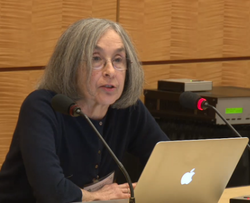
Hello. I’m Joan Grobstein, M.D.
This committee has been asked to develop evidence-based clinical diagnostic criteria for ME/CFS. This could be a very easy task because the Canadian Consensus definition has already been developed by experts in the field, has been recommended by the primary professional society for this disease, and was recently endorsed again by experts. Clearly, experts think the evidence supports the Canadian definition. It isn’t perfect, but it doesn’t have to be. Few medical definitions are perfect, since knowledge changes over time. The Canadian is adequate and should be used. Thus your primary task has essentially already been done. If you choose to endorse it, you can spend the million dollars allocated to this report to identify the many gaps in our knowledge of ME/CFS and put together a sorely needed research plan with adequate funding.
Unfortunately, the evidence base for ME/CFS has been adversely affected by two factors: lack of research funding and a multitude of definitions of the disease. ME/CFS receives approximately 6 million dollars per year in most years. Compare this to the billion dollars per year that has allowed AIDS patients to lead essentially normal lives. Because of poor funding, none of the definitions are particularly well-supported by research and many aspects of the disease – multiple infections, immune and mitochondrial dysfunction, and orthostasis – have not been adequately studied. Large, well-powered studies are rare. And, because there are overly broad definitions of “CFS” that include many patients who don’t have ME, there are studies in the literature that do not apply to ME patients at all.
The CDC study will not clarify the definition. The design is flawed--most of the data is self-reported symptoms. The patient community has begged the CDC to collect data on promising objective measures such as 2 day CPET, viral loads and natural killer cell function. The CDC has refused.
Please note that treatment of infections, hypotension, and immune and mitochondrial dysfunction have helped patients in small studies. Looking at evidence of successful treatment, published and unpublished, helps to define the disease’s essential features.
Post-exertional malaise, orthostatic intolerance, cognitive dysfunction, and viral symptoms are the most disabling aspects of ME/CFS. The Canadian includes these and other important aspects; Fukuda and other even broader definitions do not require them. Broad definitions make it impossible to identify abnormalities in bona fide ME patients.
Since the definition issue can be easily solved by endorsing the Canadian, I urge you to address the issue that has made it difficult to characterize the disease and make progress: poor funding. Be bold. Good science costs money. DHHS has asked the wrong questions, but you can still give them the right answers: use the Canadian and increase funding. The medical community has treated this group of patients poorly.
You, as medical leaders, have the opportunity to begin to change that reality.

 RSS Feed
RSS Feed
